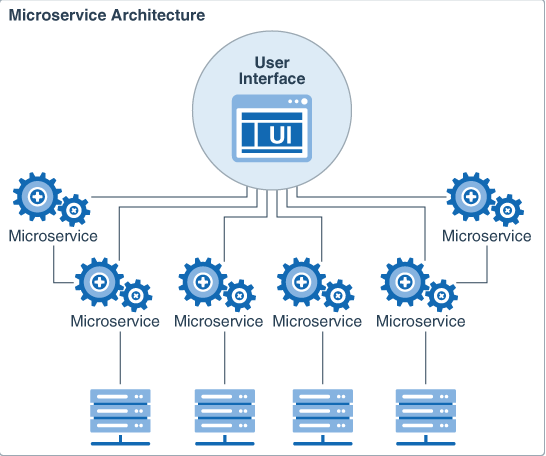The advent of microservices has created a paved way for organizations that are looking to meet clients’ requirements. Knowing about monolithic applications and their disintegration for better deployment and packaging will help us to understand about microservices.
Let’s disclose this guide to know about microservices & microservices architecture.
Challenges faced due to Traditional Architecture
It is important to look at the previously existing architecture. Earlier, organizations used to work on monolithic architecture. Let’s understand this architecture. In a monolithic architecture, software applications are tightly assembled in a single container. There are many reasons behind the use of microservice architecture over traditional architecture.
What are the challenges associated with monolithic architecture? Why has it become obsolete? Why are microservices a better alternative? There are different questions to answer.
Tech-savvy who are dealing with monolithic architecture usually find difficult to create custom solutions. Ability to create flexible solutions, scalability & reliability are other challenges associated with the traditional architecture.
Modern IT companies are using technologies because a thousand of cloud apps are available in the market. Enterprises cannot implement the latest technologies to create traditional-based applications. A single component failure will affect the entire system, this is the main drawback of the architecture. A single application cannot be upgraded as per requirements; in such instances, the whole system needs to be upgraded. Further, it is difficult for developers to deploy and build applications at the same time. The development of this platform is a tedious process as different features are to be developed at multiple stages. The coupled structure does not suit the architecture applications for complex apps.
The above problems can affect the growth and business of any organization. This is the reason why companies are approaching for microservices.
Microservices
Microservices are small and self-contained pieces of instructions or codes used for executing business functions. The structure comprises a clear interface and a piece of data information that can be deployed and decoded in any type of environment. Now, it has become easy for organizations to work on cloud-based and cloud-native apps. Such solutions are de facto standards for any type of system. Their implementation and role can be seen in serverless cloud computing & data centers.
Role of Microservices
- Clients using microservices can easily perform searches, execute management functions and configure any list.
- Every set of microservice is responsible for executing a specific function, i.e., services can be categorized based on domains & functions.
- The services can execute functions and create databases for instant data storage. Load balancers contained in services help to store data at the same time.
- Either REST or Message Bus is used for communication of these services; these are types of stateless servers.
- As microservices know their exact path to communicate, the advanced operations have become much easy. For example, monitoring & building. They use Service Discovery to execute such functions.
- API Gateway acts as a medium for the communication of microservices functions; the junctions are connected to the Gateway that helps in connecting anybody to the whole system. Learn more about microservice…
Features of Microservices
The features of microservices are ample to eliminate the drawbacks related to the traditional system. Have a look at the following features:
- Microservices allow easy decoupling of the services; thus, it becomes easy for tech-savvy to build and modify the existing system.
- The system comprises independent components that can be easily modified or altered.
- They are manageable solutions and work for multiple business functions.
- Departments can work independently to achieve better results and gain focus on individual goals.
- It has become easy for organizations to keep up with the pace. For example, they can easily focus on fast development and testing methods.
- The structure of microservices is decentralized. Developers need not work on standards on any type of specific pattern, i.e., they can utilize the best tools for development.
- Microservices architecture provides flexible development solutions. It is easy to add and remove the latest features.
Advantages to using Microservices
- Easy Deployment: It has become easy for tech-savvy to deploy microservices that comprise independent functions.
- Flexible Development: It is easy to develop microservices-based functions required.
- Efficient Working: An independent failure of the component will only affect linked microservice.
- Technology Use: Different technologies can be implemented to create multiple services in the same application.
- Easy Scaling: It is easy to work on individual scaling so that developers need not work on the whole system.
Design Practices for Microservices
Microservice architecture has made developers’ work manageable and easy. Here are some suggestions to practice while designing microservices.
- Individual segments to store each microservice.
- Stateless Servers.
- Specific development protocols for each microservice.
- Easily deployable solutions.
- Maintain codes at different levels
The above suggestions are standards for designing microservices and must be followed. We have discussed all essentials that provide the perfect solution to create a microservice architecture platform.

